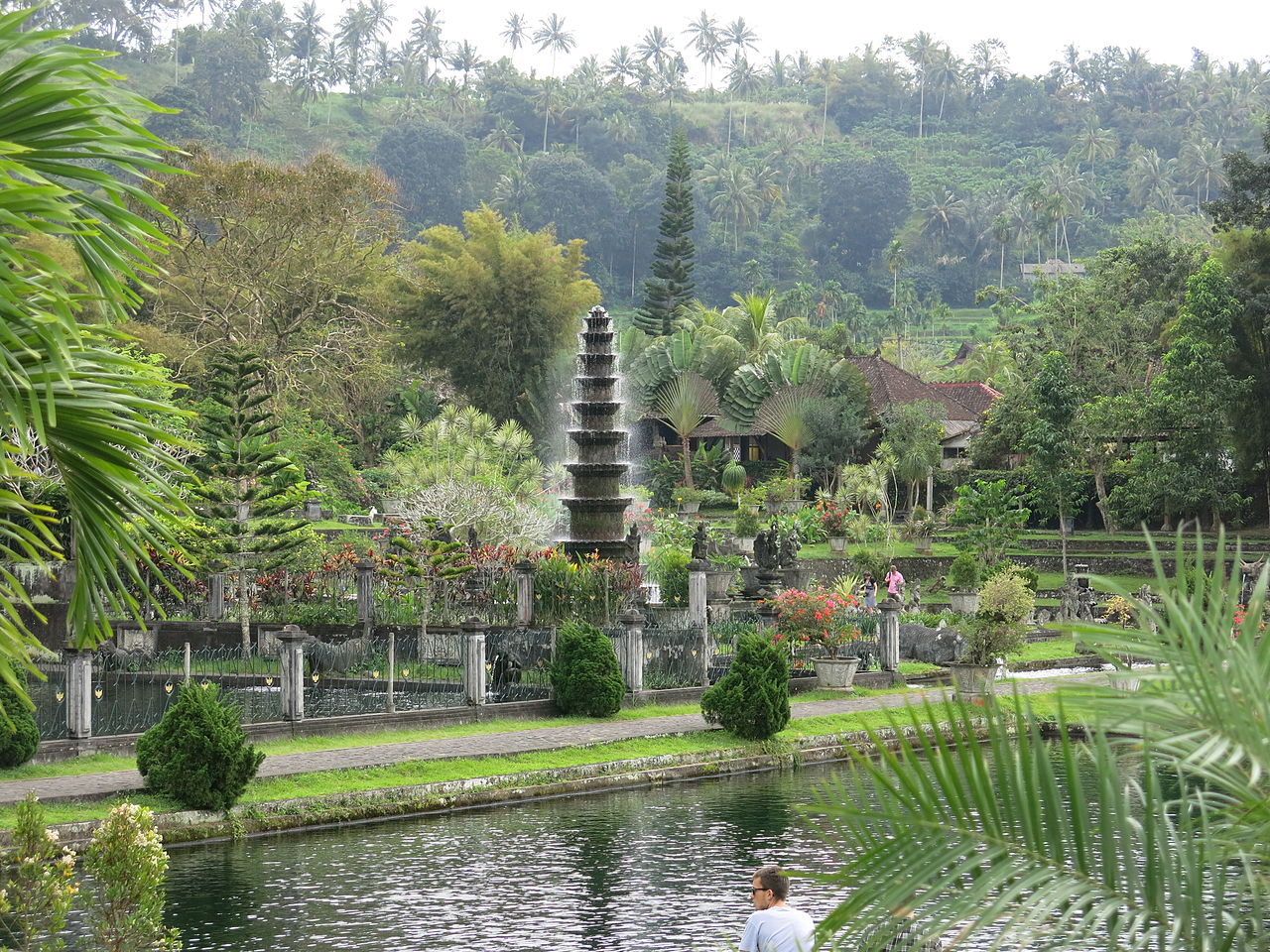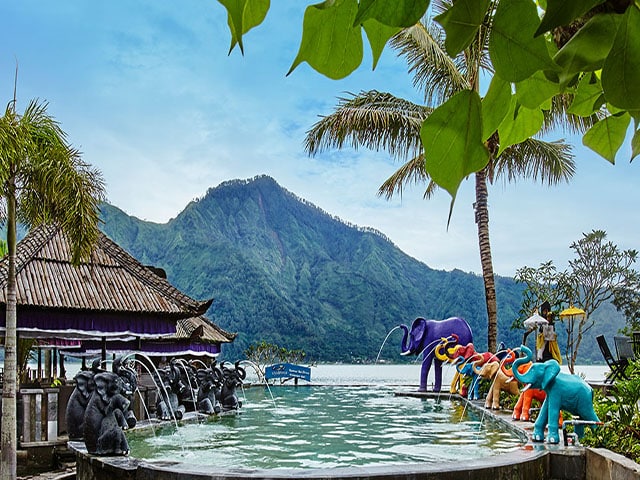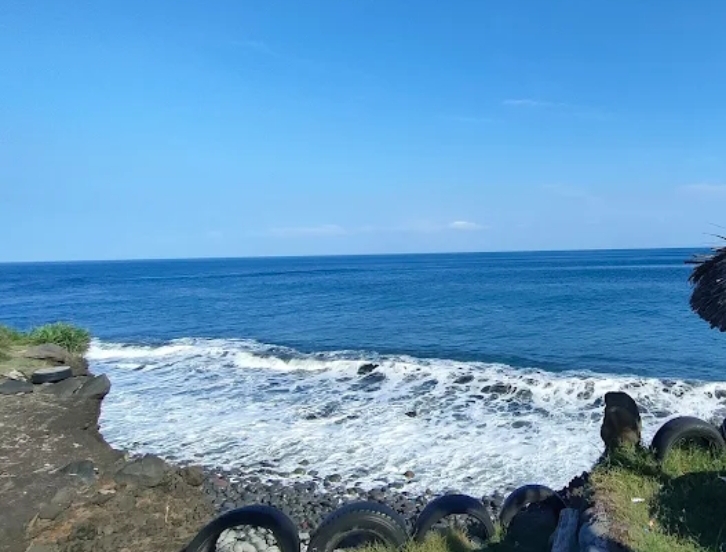Located in the eastern part of Bali, Tirta Gangga is a former royal palace renowned for its stunning water gardens. Situated about 5 kilometers from Karangasem and near the majestic Mount Agung, this iconic destination reflects the grandeur of Balinese culture and Hindu spirituality.
The name “Tirta Gangga” derives from “Tirta,” meaning holy water, and “Gangga,” referring to the sacred Ganges River in India, signifying its spiritual significance in Balinese Hindu traditions.
Tirta Gangga was constructed in 1948 by King Anak Agung Anglurah Ketut Karangasem Agung as a retreat for the royal family and a place of purification rituals. The site, nestled in Ababi Village, Abang District, Karangasem Regency, covers approximately 1.2 hectares. The water gardens are meticulously designed with multi-tiered ponds, fountains, and lush greenery, reflecting the king’s deep appreciation for aesthetics and spirituality.
Upon entering, visitors are greeted by an 11-tiered Nawa Sanga fountain, the centerpiece of the complex. Flanking the entrance are statues inspired by the Mahabharata epic, neatly arranged like royal guards.
The clear water flowing through the pools originates from a natural spring beneath an ancient banyan tree, revered for its purity. This sacred water is used for religious ceremonies, further reinforcing the site’s spiritual importance.
The gardens are divided into three distinct levels:
- Upper Level (Swah): Features the sacred spring, an upper swimming pool, and two ornamental ponds. One pond showcases fountains reminiscent of Versailles, while the other is home to Victoria lotuses.
- Middle Level (Bwah): Dominated by the Nawa Sanga fountain and two large pools, where visitors can walk along stone pathways over the water, surrounded by koi fish and statues.
- Lower Level (Bhur): Houses the expansive South Pond, with a small island known as Demon Island at its center.
Swimming is a popular activity here, offering a unique experience in the cool, crystal-clear waters sourced from Rejasa spring. Unlike modern pools, the water remains naturally fresh and invigorating, making it a must-try for visitors.
Tirta Gangga has endured significant challenges. In 1963, Mount Agung erupted, devastating the palace and its gardens. The royal family and local community were forced to flee, leaving the once-majestic site in ruins.
Due to financial constraints following Indonesia’s land reforms, reconstruction was slow and modest. The gardens became family property under the “Druwe Tengah” system, but without sufficient funds, maintenance was a struggle.
By 1979, Dr. Anak Agung Made Djelantik, a son of the late king, took the initiative to rehabilitate Tirta Gangga. Using private funds and slight increases in entrance fees, he began restoring the site. A collaboration with the local water company (PDAM) helped fund the renovation of the upper swimming pool. Slowly, the gardens regained their former beauty and started attracting global tourists.
In 2002, major renovations took place under the guidance of Dr. AA Made Djelantik and his son, AA Widoera Djelantik, an architect. With support from various foundations and donors, a master plan was developed to restore the gardens step by step. Years of dedication transformed Tirta Gangga into the stunning attraction it is today.
Since mid-2018, management has been overseen by another royal family member, AA Made Kosalya, along with a dedicated team of 40 staff members. The gardens now flourish as a beloved tourist destination, blending history, spirituality, and breathtaking landscapes.
Why Visit Tirta Gangga?
- Immerse in Balinese Royalty: Experience the legacy of Karangasem’s royal family through its exquisite architecture and gardens.
- Spiritual Tranquility: Witness sacred waters used for purification ceremonies.
- Unique Swimming Experience: Enjoy a refreshing dip in the naturally cool and clear waters.
- Photographic Paradise: Capture stunning images of fountains, statues, and koi-filled pools.
Tirta Gangga stands as a testament to Balinese heritage, resilience, and artistry. Whether seeking serenity, cultural insights, or simply a scenic escape, this royal water palace is a must-visit on any Bali itinerary. (BT)





